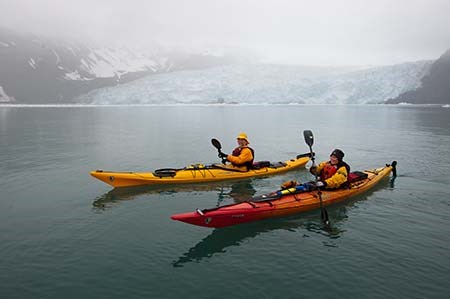When it comes to kayaking and rowing, many people may find it challenging to distinguish between these two popular water sports. Both activities involve paddling on water, but their techniques, equipment, and experiences can differ significantly. Whether you’re interested in outdoor adventure or looking to boost your fitness routine, understanding the differences between kayaking and rowing can help you choose the right activity for your preferences and goals.
Key Takeaways
- 1 Kayaking and rowing offer unique outdoor fitness experiences with distinct techniques and equipment.
- 2 Kayaking involves a double-bladed paddle and a sitting position, while rowing uses oars and a sliding seat.
- 3 Both activities offer excellent exercise benefits, including improved cardiovascular health and muscle strength.
- 4 Kayaking is often more accessible for beginners, while rowing can be more challenging but rewarding.
Understanding Kayaking and Rowing
Both kayaking and rowing are popular recreational boating activities, but they involve different techniques, equipment, and experiences. Let’s delve deeper into each activity to understand their key differences.
Kayaking: A Closer Look
Kayaking is a versatile water adventure that can be enjoyed on rivers, lakes, and even the ocean. It involves sitting in a kayak, a small, narrow watercraft, and using a double-bladed paddle to propel yourself forward. Kayaking is popular for nature exploration and is accessible to people of all skill levels.
Rowing: A Detailed Insight
Rowing, on the other hand, is often associated with team sports and competitive racing. It involves sitting in a rowing shell, a long and narrow boat, and using oars to move through the water. Rowing can be done solo or in teams, and it requires synchrony and precision.
Key Differences Between Kayaking and Rowing
| Aspect | Kayaking | Rowing |
|---|---|---|
| Paddling Technique | Double-bladed paddle | Single-bladed oars |
| Seating Position | Seated, facing forward | Seated, facing backward |
| Watercraft Type | Kayak | Rowing shell |
| Common Settings | Lakes, rivers, oceans | Lakes, rivers |
| Skill Level | Beginner to advanced | Intermediate to advanced |
Exercise and Fitness Benefits
Both kayaking and rowing offer excellent exercise benefits. Here are some of the key fitness advantages:
- Improves cardiovascular health
- Builds upper body strength
- Enhances core stability
- Boosts mental well-being
Choosing the Right Equipment
The right sports equipment can make a significant difference in your water adventure experience. Here’s what you need for each activity:
- Kayaking: Kayak, double-bladed paddle, life jacket
- Rowing: Rowing shell, oars, sliding seat, life jacket
Exploring Different Water Settings
Whether you enjoy river activities or prefer the calm of lake activities, both kayaking and rowing can be adapted to various water environments. For instance, kayaking is often preferred for nature exploration in scenic areas, while rowing is popular in competitive racing settings.
For more insights on choosing between canoeing and kayaking, check out this detailed guide: Canoe Vs Kayak: Key Differences, Benefits, And Choosing The …
Additionally, if you’re looking to power up your fitness routine with kayaking, this resource can be invaluable: KAYAKING – Power Up Your Fitness
Community Discussion
Join the community discussion on the differences and preferences between kayaking and rowing on Reddit:
- Kayaking or Rowing? : r/Kayaking
- Rowing for Kayaking? – Advice – Paddling.com
- Kayak vs. Rowing : r/Rowing
Watch and Learn
Watch this helpful YouTube video on kayak stroke hip rotation to enhance your kayaking technique:
Exploring Eglin for just $5 > Eglin Air Force Base > Article Display

Source: Eglin Air Force Base
Canoeing, Kayaking and Boating – Mammoth Cave National Park (U.S. …

Source: Mammoth Cave National Park
Whether you are exploring the scenic waters of the United States or engaging in a vigorous outdoor fitness routine, both kayaking and rowing offer unique and rewarding experiences. Choose the activity that best aligns with your interests and fitness goals, and enjoy the beauty of nature from a new perspective.
FAQs
Does rowing help with kayaking?
Yes, rowing can help with kayaking as both activities involve similar upper body and core muscles. Engaging in rowing can improve your strength and endurance, which can be beneficial when kayaking.
Is rowing and kayaking the same thing?
No, rowing and kayaking are not the same. Rowing involves using oars and a sliding seat to move a rowing shell, while kayaking uses a double-bladed paddle to propel a kayak. Additionally, the techniques and equipment for each activity are different.
How do you row when kayaking?
When kayaking, you don’t row in the traditional sense. Instead, you use a double-bladed paddle to perform a series of strokes that propel the kayak forward. The motion involves alternating sides, using your core and upper body muscles to maintain momentum.
What exercise mimics kayaking?
Exercises such as seated rows, lat pull-downs, and core rotations can mimic the motions and muscle engagement of kayaking. These exercises help build the upper body and core strength needed for effective paddling.


[…] companion. Sit-on-top or sit-inside, each design caters to distinct preferences, ensuring that your kayaking experience aligns seamlessly with your […]